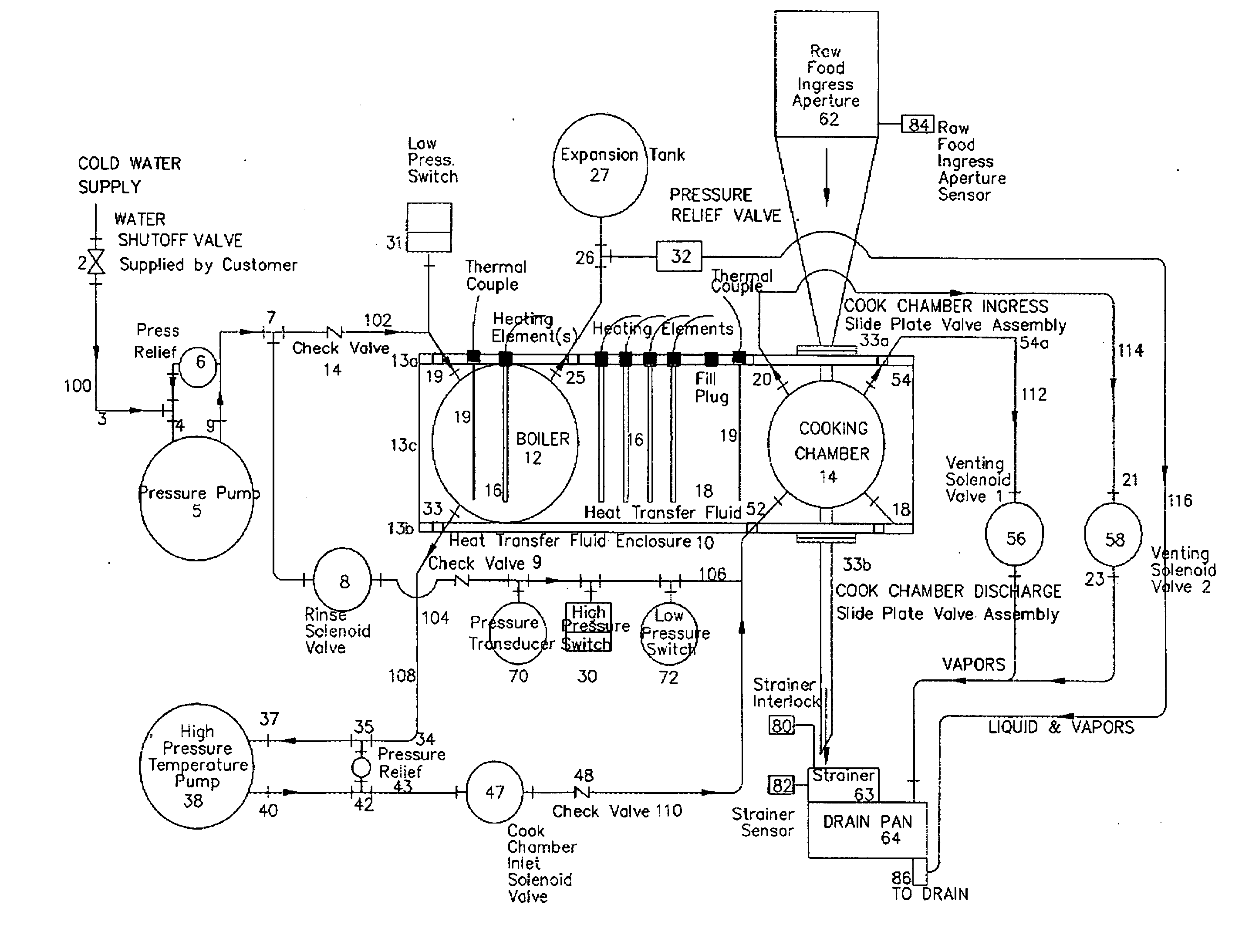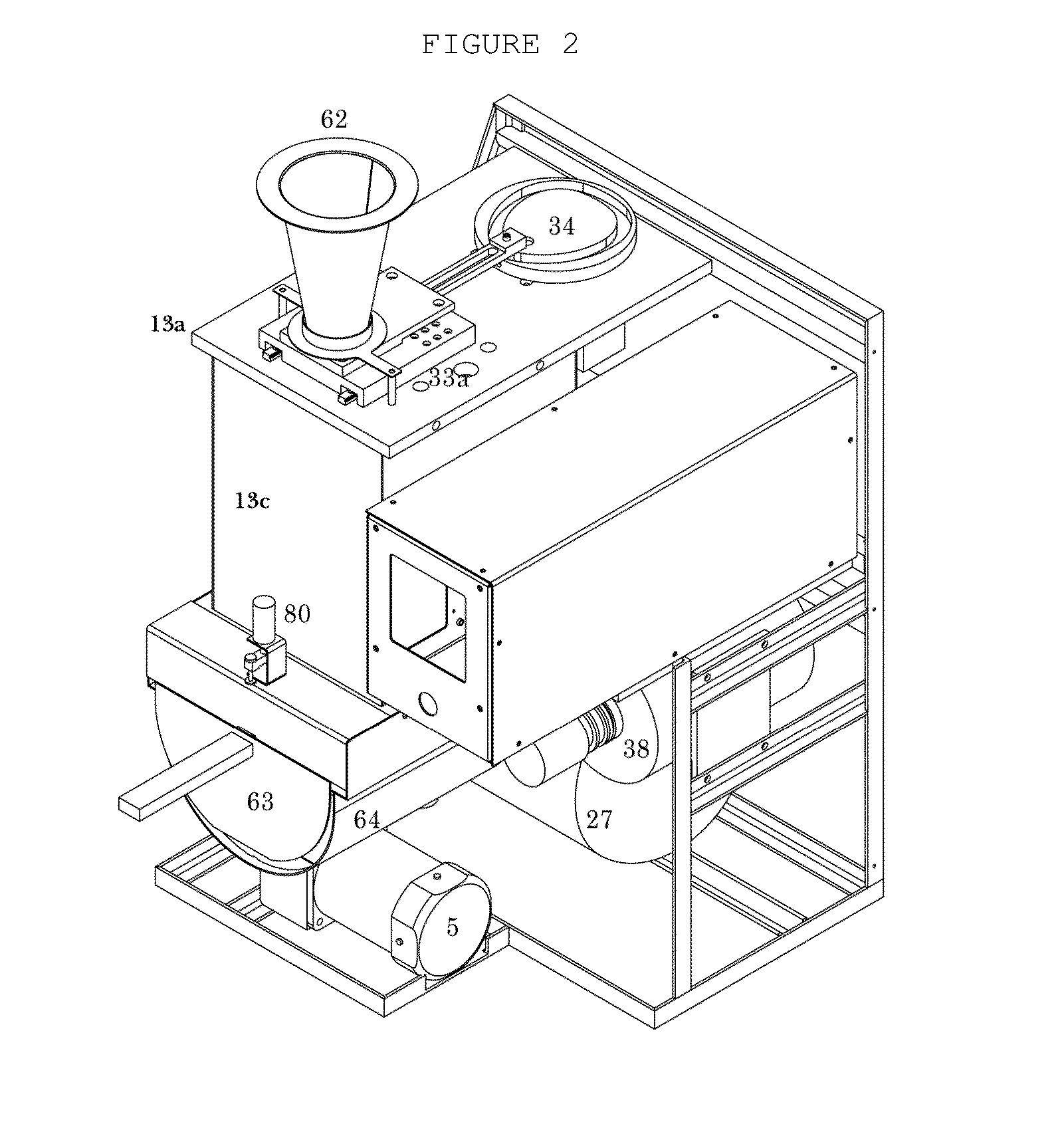Machine to fast cook raw food stuff including dry-goods such as pasta on demand
a technology of raw food and machine, which is applied in the field of machine to fast cook raw food including dry goods such as pasta on demand, can solve the problems of insufficient robustness of prior art designs, inability to reliably and consistently fast-cook machines, inconsistent cooking quality of raw food-stuffs in commercial environments, etc., and achieves the effect of reducing the time necessary for heating, preventing significant steam generation, and quickening the elevation of the boiler water
- Summary
- Abstract
- Description
- Claims
- Application Information
AI Technical Summary
Benefits of technology
Problems solved by technology
Method used
Image
Examples
Embodiment Construction
[0089]A fast cook pasta machine in accordance with this invention that includes the following:
[0090]A raw food ingress staging aperture 62 that is positioned above the inlet of a cook chamber 14 separated by a proprietary design upper slide plate valve assembly 33a. The raw food ingress staging aperture 62 is used to temporarily contain a portion of an uncooked food-stuff such as dry pasta prior to cooking and aligns and directs the food stuff for entry through the upper slide plate valve assembly 33a and into the cook chamber 14. When the upper slide plate valve assembly 33a opens, the food stuff contained within the raw food ingress staging aperture 62 is dispensed and directed into the cook chamber 14. The upper slide plate valve assembly 33a is rigidly mounted to the top-side surface of the cooking assembly top plate 13a, and the lower slide plate valve assembly 33b is rigidly mounted to the bottom-side surface of the cooking assembly bottom plate 13b. Both valve assemblies are ...
PUM
 Login to View More
Login to View More Abstract
Description
Claims
Application Information
 Login to View More
Login to View More - R&D
- Intellectual Property
- Life Sciences
- Materials
- Tech Scout
- Unparalleled Data Quality
- Higher Quality Content
- 60% Fewer Hallucinations
Browse by: Latest US Patents, China's latest patents, Technical Efficacy Thesaurus, Application Domain, Technology Topic, Popular Technical Reports.
© 2025 PatSnap. All rights reserved.Legal|Privacy policy|Modern Slavery Act Transparency Statement|Sitemap|About US| Contact US: help@patsnap.com



